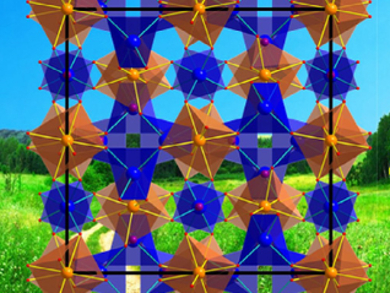Jagannatha Gopalakrishnan, Srinivasan Natarajan, Indian Institute of Science, Bangalore, and colleagues have explored garnet-structured oxide materials containing 3d transition-metal ions for the development of new inorganic colored materials. They have investigated the garnet structure, [A3][B2][C3]O12, as a platform for developing colored compounds. Two garnets, Ca3Sb2Ga2ZnO12 and Ca3Sb2Fe2ZnO12, were prepared and substituted with several 3d transition-metal ions (Co2+, Ni2+, Cu2+). The colors of the substituted garnet coumounds ranged from different shades of blue, green, turquoise, to red. The origin of these colors was interpreted on the basis of ligand field and ligand–metal charge-transfer transitions that occur within the distorted tetrahedral Ga/Fe/MIIO4 chromophores. The Fe3+-containing oxides showed band-gap narrowing owing to strong sp–d exchange interactions between Zn2+ and the transition-metal ion. This tuned the color of these materials uniquely.
The study identified the crucial role of band-gap engineering to develop rare and unique colors. The team identified new robust colored inorganic materials for blue and green colors that could be further explored as pigments. The results could also be useful for the synthesis of other brilliantly colored garnet-based materials.
- Color Tuning in Garnet Oxides: The Role of Tetrahedral Coordination Geometry for 3 d Metal Ions and Ligand-Metal Charge Transfer (Band-Gap Manipulation),
Anupam Bhim, Sourav Laha, Jagannatha Gopalakrishnan, Srinivasan Natarajan,
Chem. Asian J. 2017.
DOI: 10.1002/asia.201701040




